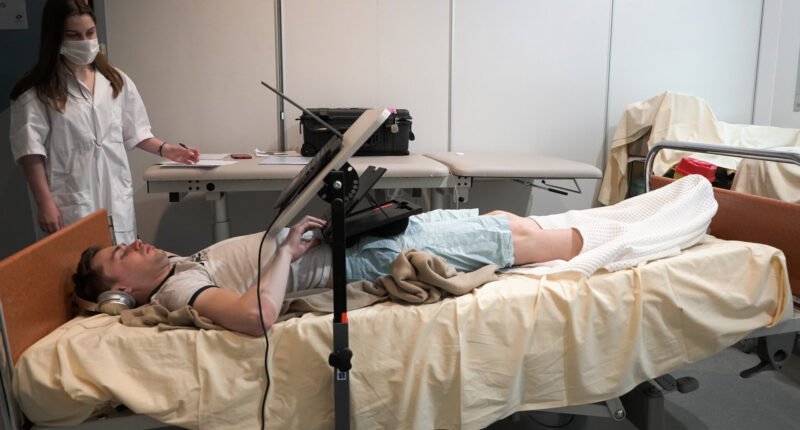BEING paid more than £15,000 to lay in bed all day for two months sounds like a dream job.
But before sleepholics get too excited, there’s a lot more to it.
A dozen volunteers are preparing for a challenging 60 day experience of cycling, spinning and constant medical tests.
All while keeping one shoulder touching the mattress.
The bed also has to be titled six degrees below the horizontal with their feet up.
But at least meals, showers and toilet breaks are included.


It’s all part of a wild experiment to see how the body reacts up in space.
During space missions, gravity affects astronauts’ bodies in a number of ways.
Your eyes and heart are affected, and things like muscles and bones begin to waste away.
As blood flows to the head and muscle is lost from underuse, experts from ESA (the European Space Agency) want to see how the group reacts.
Most read in Tech
And hopefully they’ll be able to find a way to counteract them for future space travellers.
One of the things participants have to do is lay down while cycling for a study called BRACE (Bed Rest with Artificial gravity and Cycling Exercise).
It’s looking at the possibility of using cycling as a way to counteract the negative body changes.
They’re spun around to drive blood to their feet, where the force of gravity doubles during the ride.
“We encourage volunteers to reach their maximum effort on the bike, and then compare the impact with those who are not biking at all,” said Rebecca Billette, head of clinical research at MEDES, the Institute for Space Medicine and Physiology in Toulouse, France, where the tests are taking place.
Another group will get to lay in bed without cycling for two months to compare results.
Each volunteer is paid €18,000 (£15,600), according to the MailOnline.
“We hope to understand the added value of artificial gravity to the fitness routine astronauts follow on the International Space Station,” said Angelique Van Ombergen, ESA lead for life sciences at Human and Robotic Exploration.
“The crew exercise two hours per day in orbit.”
Find out more about science
Want to know more about the weird and wonderful world of science? From the Moon to the human body, we have you covered…
We pay for your stories! Do you have a story for The Sun Online Tech & Science team? Email us at [email protected]
This post first appeared on Thesun.co.uk








